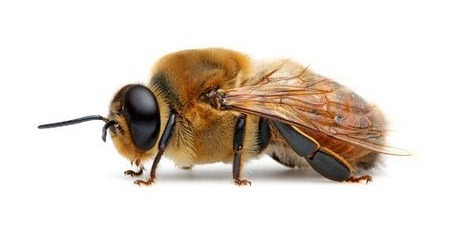The Bees
Once the first flowers begin to bloom, thousands of bees begin to leave the hive. Their colonies are taking on a new life force and starting the new harvest. Each bee spends about a third of its life collecting nectar, water, propolis and pollen for the hive. Before starting their duties, working bees perform other tasks necessary for the life of the colony: take care of the young bees, clean the hive, repair and build new waxes, store honey, maintain the ideal temperature, explore the surrounding area and protect the entrance. The worker bees, from 30,000 to 50,000 of them, are all women, but they do not lay eggs, as this task is actually fulfilled only by a special bee: the queen. Drones, the males of species found only in the colony during the summer, fertilize the queen bee in flight. The harvest of nectar, the main food of bees, is methodical and stable: the bee lands on a flower and absorbs the nectar. It goes from flower to flower until its prolobus is filled with nectar, a fixture that allows the transfer of nectar and water. The process continues methodically: when bees start harvesting good nectar, they do not let themselves distance themselves from other flowers. In the hive, a domestic bee waits for the bee collector, from which it collects the harvest. The nectar then passes from one bee to another (feeding) until it is stored in a cell in the waxes. At each feeding step it becomes more concentrated and enriched with enzymes. It will continue to mature inside the cell, thanks in part to the airy bees hitting their wings. These individuals have the task of keeping a constant temperature and keeping the moisture low in the blister so that the nectar that has already been processed can dry out and ripen to become honey. When the honey is ready, the bees seal the cell with a layer of wax to preserve their food for the winter.
The worker bee
About 50,000 female bees work for 30 days during the nectar season. While in winter, this percentage goes to 30,000 bees living until next spring. They perform all the duties necessary for the survival of the colony and protect the precious queen. Working bees determine the fate of the colony, encouraging the queen to lay eggs that create more workers, queens or drones as required. They have one goal: to ensure the perpetuation of the species, sacrificing itself for the common good.
The Queen
Only one Queen per colony is able to lay eggs, up to 2000 of them a day in high season. It feeds on working bees only with royal jelly and can live up to 5 years, leaving the hive to do fertilization flights, a few days after birth or with the flock when conditions in the colony make it necessary. When a new queen is born, the old queen leaves the hive, with half the working bees starting a new colony, leaving her successor a safe environment to give life to a new generation.
The drone
Males of the species are born only when the working bees decide to build larger cells where the queen can lay unsmeded eggs, from which the drones are created. The drone has no stinger and cannot be powered on its own. The drones are equipped with large eyes and wings that make them capable of flying up to 15 kilometers from the hive, as opposed to the 4 kilometers of workers. Drones spend their lives searching for a queen, strictly from another hive, to share a fertilization flight. In this way they contribute to the continuation of the colony and their life ends at the end of the summer.



